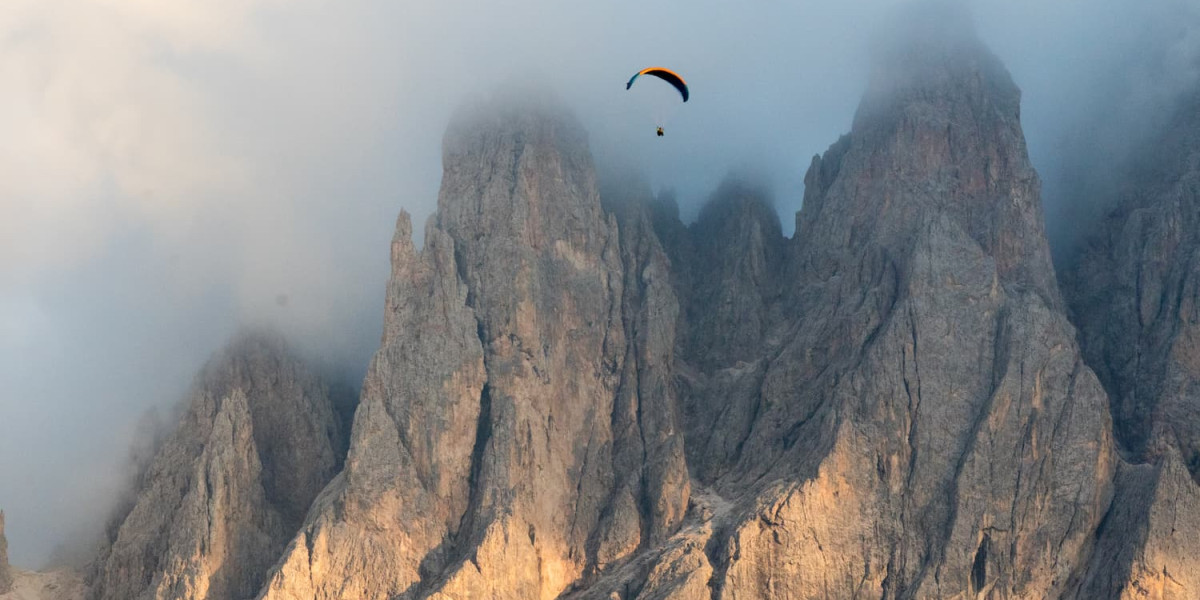Today, to preserve the environment and pass on a healthier world to future generations, it is essential to adopt an eco-responsible lifestyle by reducing our carbon footprint and waste. This is not just a matter for governments and multinationals, but for the whole of civil society: individuals, associations, small businesses and SMEs. We will see that paragliding has a carbon impact. The Fédération Française de Vol Libre (French Federation of Free Flight) has officially taken the measure and all those involved (professionals and amateurs alike) must take part in initiatives aimed at ensuring that paragliding and the environment go hand in hand.
Paragliding: an overview of the discipline
Paragliding is a free-flight sport that involves gliding through the air using a specially designed glider, often called a wing or paraglider. Practitioners, known as paragliders, use updrafts to soar through the sky in flights of varying lengths. Paragliders generally launch themselves from a mountain or cliff. Another variant of the discipline is to use a paramotor, which is a light engine in category 1 of microlights. Attached to the pilot's back, it enables them to take off from flat ground and then use air currents to fly through the sky. Once in the air, they can control their trajectory using the glider's controls, which allow them to turn left or right, climb or descend.
The environmental impact of outdoor sports
Like all outdoor sports, paragliding can have negative consequences for the environment.
To begin with, the increase in the number of people using paragliding sites can lead to excessive urbanisation of these areas through the construction of car parks, access roads and even reception structures on natural sites, which can modify the ecosystem and disturb the natural habitats of certain animals. Regular use of paragliding sites can lead to soil erosion, especially in areas where paragliders launch. The combination of mountain biking and paragliding can accelerate soil erosion.
Waste left behind by participants (packaging, plastic bottles, etc.) can contribute to the pollution of natural areas. What's more, certain sports, such as fishing or boating, can generate specific types of waste, as is sometimes the case with paragliding.
Outdoor sports require the use of natural resources. This is the case with paramotor paragliding, where most models consume petrol.
Paramotoring can cause noise pollution and the presence of humans in natural areas can disturb the habitats of wild animals, causing them to flee or change their natural behaviour. This can have consequences for local biodiversity and the survival of certain species.
The environmental compatibility of paragliding
But paragliding and the environment are not mutually exclusive. It's important to note that outdoor sports can also have beneficial effects on the environment. They raise public awareness of nature and encourage the protection of natural areas. What's more, many federations and outdoor sports and leisure clubs are actively involved in actions to preserve the environment, such as cleaning up practice sites and restoring habitats.
Challenges and criticism
As we mentioned in the introduction to this article, the Fédération Française de Vol Libre, which includes paragliding, has officially taken stock of its impact on the ecology and is committed to reducing its carbon footprint in the future. It has therefore adopted an environmental charter that sets out a new management policy for hang-gliding sites and calls for actions to raise awareness and encourage pilots to take responsibility for respecting the environment. It also works with the DREAL and environmental organisations such as the OLP.
Green initiatives in the world of paragliding
Many green initiatives have been launched in the field of paragliding. These include :
- Public awareness campaigns
- Flight restrictions on listed natural sites: you can't just go paragliding anywhere
- Restrictions on free flight during animal reproduction periods
- Clean-up operations in the surrounding area
This is not an exhaustive list, and it is possible to reduce your carbon footprint at other levels by using eco-responsible equipment and materials or by using electric paramotors, for example. The French Free Flight Federation has also introduced the "refly card", which enables you to find facilities or clubs that give a second life to paragliding equipment by reusing or recycling it.
How can paragliding inspire other sports?
With these initiatives, paragliding offers an inspiring example of how a sport can be practised in an eco-responsible way. Its philosophy of respect for the environment and connection with nature serves as a model for other disciplines, encouraging the adoption of sustainable practices and action to preserve natural habitats.
Paragliding offers a unique flying experience. But it also raises important questions about our relationship with the environment. By adopting sustainable practices and encouraging ecological innovation, the paragliding community is setting an example for the preservation of our natural resources.

